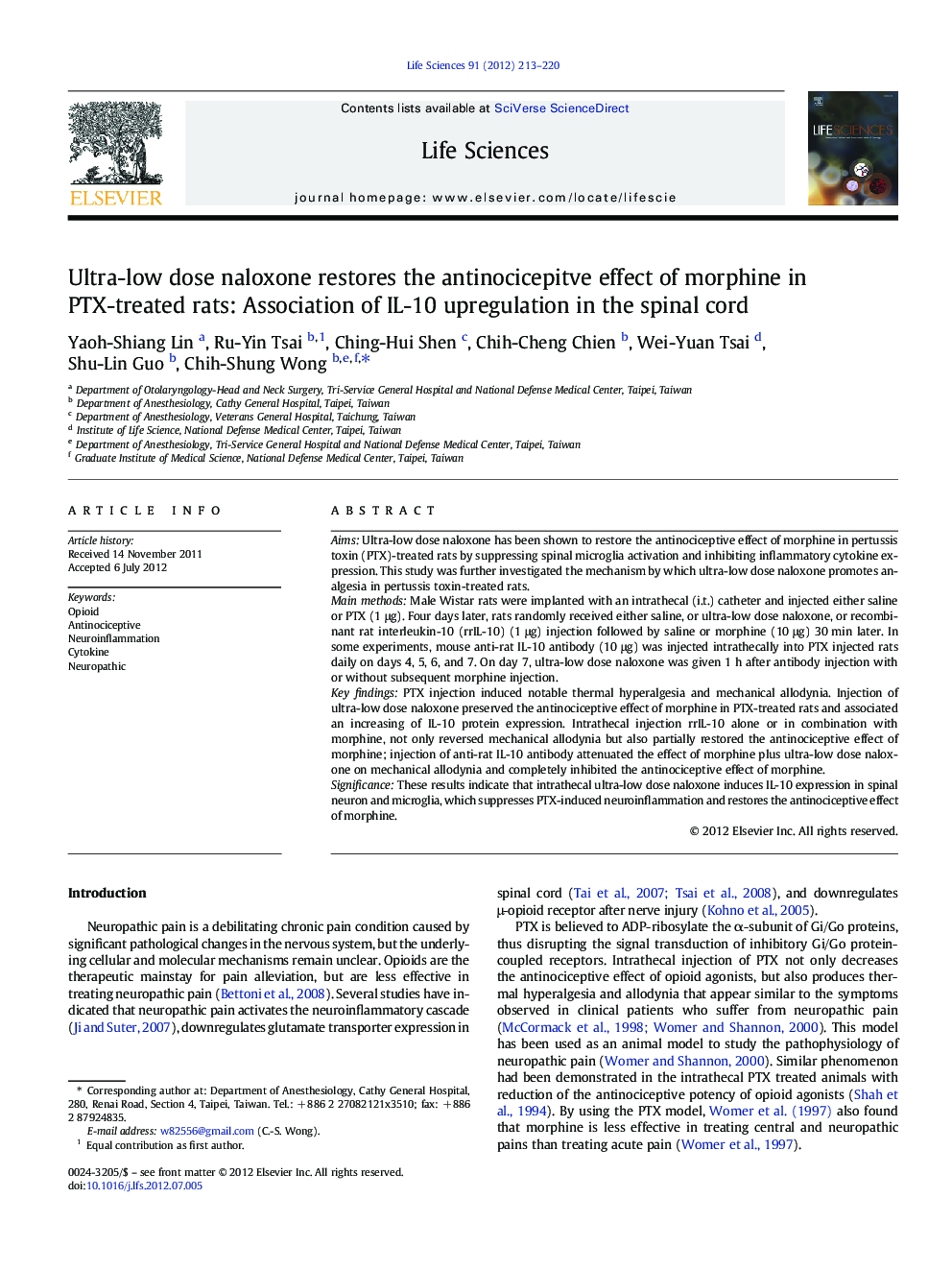| کد مقاله | کد نشریه | سال انتشار | مقاله انگلیسی | نسخه تمام متن |
|---|---|---|---|---|
| 2551756 | 1560646 | 2012 | 8 صفحه PDF | دانلود رایگان |

AimsUltra-low dose naloxone has been shown to restore the antinociceptive effect of morphine in pertussis toxin (PTX)-treated rats by suppressing spinal microglia activation and inhibiting inflammatory cytokine expression. This study was further investigated the mechanism by which ultra-low dose naloxone promotes analgesia in pertussis toxin-treated rats.Main methodsMale Wistar rats were implanted with an intrathecal (i.t.) catheter and injected either saline or PTX (1 μg). Four days later, rats randomly received either saline, or ultra-low dose naloxone, or recombinant rat interleukin-10 (rrIL-10) (1 μg) injection followed by saline or morphine (10 μg) 30 min later. In some experiments, mouse anti-rat IL-10 antibody (10 μg) was injected intrathecally into PTX injected rats daily on days 4, 5, 6, and 7. On day 7, ultra-low dose naloxone was given 1 h after antibody injection with or without subsequent morphine injection.Key findingsPTX injection induced notable thermal hyperalgesia and mechanical allodynia. Injection of ultra-low dose naloxone preserved the antinociceptive effect of morphine in PTX-treated rats and associated an increasing of IL-10 protein expression. Intrathecal injection rrIL-10 alone or in combination with morphine, not only reversed mechanical allodynia but also partially restored the antinociceptive effect of morphine; injection of anti-rat IL-10 antibody attenuated the effect of morphine plus ultra-low dose naloxone on mechanical allodynia and completely inhibited the antinociceptive effect of morphine.SignificanceThese results indicate that intrathecal ultra-low dose naloxone induces IL-10 expression in spinal neuron and microglia, which suppresses PTX-induced neuroinflammation and restores the antinociceptive effect of morphine.
Journal: Life Sciences - Volume 91, Issues 5–6, 4 September 2012, Pages 213–220